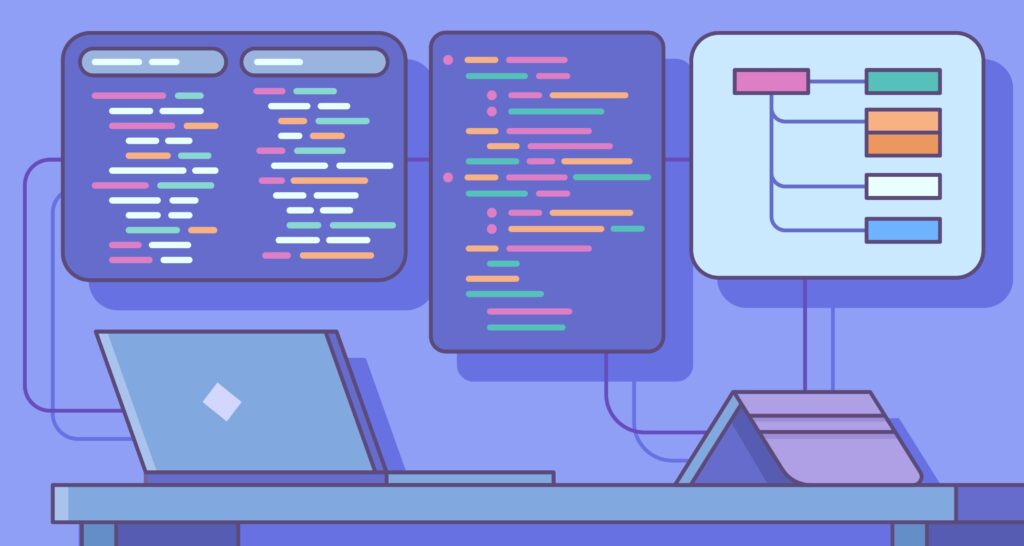- In a nutshell:Generative AI and predictive analytics are a powerful combination for businesses.
- Generative AI creates unique outputs based on recognized patterns, while predictive analytics uses historical data to make informed decisions.
- The combination of these technologies enhances business processes and can be applied to various industries.
- Understanding generative AI and predictive analytics empowers businesses to make data-driven decisions. Pecan's Predictive GenAI accelerates this process.
- Implementing these technologies requires assessing business requirements, selecting the right technology platforms, and training staff effectively.
What's better than one cutting-edge technology for your business? How about two? Because yes, indeed, generative AI and predictive analytics are an exciting combination that's worth exploring. In fact, integrating these capabilities into your company has become an essential part of maintaining a competitive advantage. Generative AI (or GenAI) can create new and unique outputs based on patterns it recognizes, and it is revolutionizing industries such as healthcare, finance, and manufacturing. Predictive analytics uses historical data and statistical modeling techniques to predict future outcomes and behaviors, enabling businesses to make informed decisions. The combination of these technologies can enhance business processes. You can merge generative AI with predictive analytics to maximize their advantages and apply them to various industries. Business professionals should have a comprehensive understanding of generative AI and predictive analytics to leverage these technologies and maximize their benefits. A clear understanding of how generative AI can make predictive analytics easier and more accessible empowers you to make data-driven decisions.Understanding Generative AI
While AI systems have been around for quite some time, Generative AI is a relatively recent advancement with great potential. Goldman Sachs estimates that as GenAI spreads, this technology could increase global GDP by 7%, or almost $7 trillion, and also lift productivity growth by 1.5 percentage points over the next 10 years. The ability to generate new content that mimics the style and depth of human creations opens up a whole new realm of possibilities.
Definition and explanation of Generative AI
Generative AI is a subset of artificial intelligence that operates on the principles of generative design. This type of AI uses algorithms to produce output from input data, but unlike other AI models that process data for a specific output, generative AI goes a step further. It not only processes data but also learns to understand the underlying patterns and structures of the given input. This understanding equips generative AI with the capability to generate unique and original outputs that still adhere to the inherent patterns it has learned from. This ability to generate new, original outputs from learned data underscores why it's considered 'generative.' The uniqueness, novelty, and creativity exhibited by this AI make it a game-changer in various application fields.
How Generative AI works
The process by which Generative AI works is quite complex. It utilizes machine learning algorithms to analyze a large set of input data. By understanding the patterns and structures within the data, the AI learns and adapts its approach. It then utilizes its learned knowledge to create new, unique outputs that still align with the patterns and structures it has recognized. There are two key aspects to how generative AI operates. The first is training, where the AI is exposed to a large dataset and learns to recognize its overall structure and individual patterns. The second is generation, where the AI uses the knowledge it has gained from training to create new, unique outputs. Training is an iterative process, meaning the AI learns gradually over time. It starts with a basic understanding of the dataset and gradually refines this understanding as it is exposed to more data. This iterative learning allows the AI to evolve its knowledge and adapt to changes in the data. The 'intelligence' of generative AI lies in its ability to learn from data and create something new and original. This ability sets it apart from other forms of AI and gives it a wide range of potential applications.
Applications of Generative AI in different industries In marketing and advertising, Generative AI is applied to create customized digital content that speaks directly to target audiences. This includes images, articles, and even social media content that mimics human creativity, thus increasing engagement and conversions. In entertainment, Generative AI is used to create unique music tracks, movie scripts, and even video game environments. This functionality is revolutionizing media consumption and providing endless possibilities for new creative content. In healthcare, Generative AI is used in drug discovery, where it can generate predictions about how different compounds will interact. This is speeding up the process of drug development and has the potential to revolutionize how diseases are treated. In manufacturing and design, Generative AI can generate endless variations of a product based on a set of constraints, leading to innovative designs while reducing costs. These applications show the immense potential of Generative AI, which, when combined with predictive analytics, can provide a powerful tool.
Introduction to Predictive Analytics
Predictive analytics is a branch of advanced analytics that uses historical data, machine learning algorithms, and statistical algorithms to forecast future events or behaviors. This tool gives businesses a significant advantage by providing actionable insights and informed forecasts. It is the process of using data, statistical algorithms, and machine learning techniques to predict future outcomes based on historical data. The goal of predictive analytics is to go beyond knowing what has happened and provide the best estimation of what will happen in the future. That foresight is powerful: According to McKinsey, companies integrating predictive analytics into their processes are increasing efficiency by 30% or more and boosting revenues 5-10%.
Importance of Predictive Analytics in Business Decision-Making
Predictive analytics is a vital tool for business decision-making. This technology allows businesses to anticipate potential trends and behaviors, enabling them to make proactive, data-driven decisions. Predictive analytics offers insights that can help companies predict customer behavior, detect potential risks, optimize operational efficiency, and identify new market opportunities.
Industries Utilizing Predictive Analytics
Various sectors have recognized the potential of predictive analytics and are successfully leveraging it. The healthcare industry uses it for disease prediction and prevention. Retailers use predictive analytics to understand buying behaviors, forecast demand, and manage inventory. In the finance sector, it’s used for credit scoring and fraud detection. Even the public sector uses predictive analytics for safety measures and forecasting public needs. These examples illustrate the widespread utility of predictive analytics across different industry sectors.
What Is the Difference Between Predictive and Generative AI?
We have a full field guide if you want to go deep on this question! But in short, generative AI and predictive AI are two different approaches in the field of artificial intelligence (AI). Generative AI focuses on generating new content, such as text, images, or synthetic data, while predictive AI finds patterns in training data to predict future outcomes. Here are the key differences:
- Purpose: Generative AI: It focuses on creating new content, such as text, images, music, and even code. It can also be used for tasks like data translation and marketing material generation.
- Predictive AI: Its main purpose is to make predictions, recommendations, and decisions based on patterns and trends found in data.
- Techniques:Generative AI: It uses techniques like deep learning and neural networks to generate new content by learning from existing data.
- Predictive AI: It employs various AI and machine learning techniques, such as regression, classification, and clustering, to analyze data and make predictions or recommendations.
- Output:Generative AI: It produces new and original content that may not have existed before. For example, it can generate a new piece of music or create a realistic image of a non-existent object.
- Predictive AI: It provides insights and predictions based on existing data. For instance, it can predict customer behavior, recommend products, or forecast future trends.
The Intersection of Generative AI and Predictive Analytics
Generative AI and predictive analytics complement each other in unique and effective ways. Generative models can enrich the predictive capabilities of analytics by imitating the distribution of data, creating more robust models, and generating possible scenarios to support the prediction process. This enhancement allows predictive analytics to factor in more variables and more diverse data, leading to more insightful and accurate forecasts. Generative AI can be incorporated into software platforms (as in Pecan's Predictive GenAI) to simplify and augment the process of defining, generating, and applying predictive analytics models. For instance, generative AI can analyze a company's historical data, assist in building predictive models based on identified patterns, and then automate actions based on those predictions for business outcomes, such as customer churn or sales volumes. This automation not only saves time but also ensures consistent and accurate predictions.
The Advantages of Merging Generative AI with Predictive Analytics
Merging generative AI with predictive analytics comes with significant advantages. Here are some of those benefits:
- The ability to quickly customize predictive queries and results for specific business needs
- No need to hand-code models or rely on specialized data science teams.
- Flexibility to quickly adapt models to specific needs
- Simulation of various business scenarios as a proactive tool for strategic planning and risk mitigation
Potential Issues in Combining GenAI and Predictive Analytics
Could using GenAI in predictive analytics overemphasize common patterns?
Some users express concern about using generative AI in predictive analytics, specifically highlighting the potential oversight of outliers and rare events, which could compromise predictions' accuracy. After all, the probabilistic nature of generative AI models makes it seem that they might prioritize common patterns and overlook anomalies, thus diminishing the model's ability to forecast rare occurrences. However, advancements in generative AI technologies are continually addressing these concerns. State-of-the-art models are designed with robust mechanisms to detect and adapt to outliers, ensuring a more comprehensive understanding of the data distribution. The evolution of GenAI and predictive analytics is geared towards mitigating these potential pitfalls.
What is the role of humans in using GenAI and predictive analytics?
While these AI tools present amazing potential, some humans worry about their role in an AI-driven world — especially regarding potential limitations on human decision-making and critical thinking. Would relying on automated systems lead to passive acceptance of AI-generated predictions, diminishing the role of human intuition and analytical skills? However, as we're all learning, all AI systems today are intended to augment human decision-making, not replace it. Modern AI systems are designed with user-centric interfaces that encourage collaboration between AI algorithms and human experts. These tools are crafted to provide interpretable and explainable insights, empowering users to critically evaluate and validate the generated predictions. Ultimately, the strengths of both humans and AI are put to work, creating better and more efficient decision-making processes.
Implementing Generative AI and Predictive Analytics in Your Business
Assessment of Business Requirements
Before integrating these technologies, it's essential to assess your business needs and available resources. Identify the key areas where these technologies can be applied, evaluate your existing IT infrastructure, and consider your organization's ability to adapt. Some requirements for using these tools effectively are a powerful computing infrastructure to handle large data sets and complex calculations, a strong data governance policy to assure data quality and security, and a skilled team with expertise in artificial intelligence, data analytics, and your industry. Also, having a clear, purposeful business use case for these technologies is crucial. This use case should align with your business goals and could range from improving production efficiency to forecasting consumer behavior or identifying potential growth opportunities. Lastly, commitment from leadership to drive the cultural change necessary for the successful adoption of these technologies is essential.
Steps for Implementation
Start with the data. Ensure you have quality data to feed into the AI and analytics systems. Then, select and deploy the right technology platforms that support generative AI and predictive analytics. Pecan AI uses a unique fusion of GenAI with predictive modeling capabilities — called Predictive GenAI — to help businesses kickstart their predictive analytics processes. The ability to describe a business need in your own words, then quickly obtain the necessary training data and model, is all made possible with generative AI. Learn more about our Predictive GenAI capabilities. Finally, while these tools are incredibly powerful, they aren't necessarily self-explanatory. You must also train your staff to understand and use these technologies effectively.
Things to Consider When Implementing These Technologies
A crucial consideration is data privacy and security. Ensure that your implementation of these technologies complies with all relevant regulations. You should also consider the scalability of the solutions. Can they grow with your business?
Generative AI and Predictive Analytics: Business Tools for Success
Understanding and integrating generative AI and predictive analytics can provide businesses with a robust tool for forecasting and decision-making. These technologies not only improve the precision of predictions but also offer the flexibility to adapt to specific business needs quickly. The synergistic combination of generative AI and predictive analytics can revolutionize how businesses operate, providing them with a competitive advantage and paving the way for innovation and growth. At Pecan AI, we understand the power of data. Our Predictive GenAI combines the best of generative AI and predictive analytics to help you stay ahead of the curve. Let us help you transform data into decisions. Get a guided tour today or sign up for a free trial.







